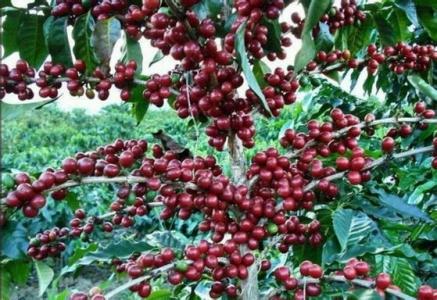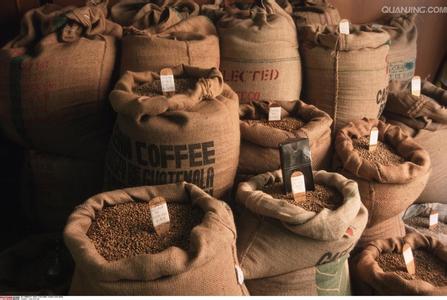How many coffee beans are there in several producing areas of Yejia Xuefei?
What are the producing areas of Yejia Xuefei? how many coffee beans are there?
European monastic academics opened up a local coffee growing industry, which was later run by coffee communities or cooperatives in villages around the town. There are no special plantations here, and coffee trees are naturally scattered in the forest and countryside. During the harvest season, the Ethiopian Coffee Trading Company goes to the town to buy coffee beans collected by farmers.
1. Planting system and environment the mountain stream village in the Yega Xuefei producing area is cool and foggy, like spring all the year round, with a gentle breeze in summer, cool but not hot, rain but not damp, and no cold damage in winter, which is the best environment for planting Arabica. There are no large coffee plantations. Coffee farmers mix coffee with other crops, usually under banana trees, to form a unique landscape.
2. The traditional way of solarization in Ethiopia is rough and smelly, which has been criticized by people. In 1959, the South American water washing method was introduced into the Yega Xuefei producing area. Most producing areas generally adopt the water washing treatment, that is, after the coffee fruit is peeled, the pectin layer is removed after fermentation and washing, and then dried. Since 2006, some coffee processing plants in some producing areas have adopted the exquisite elevated shed sun drying method, which invests in high-intensity human labor, which isolates the coffee fruit from contact with the ground and prevents the miscellaneous smell of soil in the process of sunlight. create an unusually clean fruit flavor. After more than two weeks of sun exposure, dark brown coffee fruits are professionally stored, waiting for the whole flavor to ripen. Before sale, the dried cherry pulp and sheepskin are removed, then the unripe beans and overfermented beans are removed, and the quality of sun-dried beans is improved by strict control.
The grading system of grade Ethiopian coffee is not based on the number of items, but on the proportion of defective beans in raw beans. Ethiopia launched the ECX boutique coffee trading grading system, and Q-Grader made the following grades through the evaluation of raw beans: washed Yega Xuefei is divided into Grade 1 and Grade 2, Sun Yega Xuefei is divided into Grade 1, Grade 3, Grade 4, Grade 5, and Grade 1 is the highest grade, that is, Yega Xuefei with the lowest defect rate and the best quality. This article is sorted out according to Han Huaizong's "Fine Coffee" and other contents of the Internet.

Important Notice :
前街咖啡 FrontStreet Coffee has moved to new addredd:
FrontStreet Coffee Address: 315,Donghua East Road,GuangZhou
Tel:020 38364473
- Prev

Grinding scale of Brazilian Yellow bourbon Coffee beans A brief introduction to the production area of Baking degree
A brief introduction to the Grinding scale of Brazilian Yellow bourbon Coffee beans Coffee was first introduced to Brazil in the early 18th century. In 1727, the Brazilian government sent a personable army officer to secretly bring coffee seeds from French Gaiana to Brazil on the pretext of mediating border disputes. it is said that the wife of French Gaiana was so fascinated by the officer that he saw him off on the evening of farewell.
- Next

Burundi Coffee Bean Flavor Where to Buy Price Origin Profile
Starbucks has sponsored Burundian coffee management committee officials to study overseas in order to help Burundi integrate into the world coffee market as soon as possible, and Starbucks executives will visit Burundi this month to discuss cooperation matters with relevant parties, the East African newspaper reported on the 8th. Coffee is Burundi's main export.
Related
- Detailed explanation of Jadeite planting Land in Panamanian Jadeite Manor introduction to the grading system of Jadeite competitive bidding, Red bid, Green bid and Rose Summer
- Story of Coffee planting in Brenka region of Costa Rica Stonehenge Manor anaerobic heavy honey treatment of flavor mouth
- What's on the barrel of Blue Mountain Coffee beans?
- Can American coffee also pull flowers? How to use hot American style to pull out a good-looking pattern?
- Can you make a cold extract with coffee beans? What is the right proportion for cold-extracted coffee formula?
- Indonesian PWN Gold Mandrine Coffee Origin Features Flavor How to Chong? Mandolin coffee is American.
- A brief introduction to the flavor characteristics of Brazilian yellow bourbon coffee beans
- What is the effect of different water quality on the flavor of cold-extracted coffee? What kind of water is best for brewing coffee?
- Why do you think of Rose Summer whenever you mention Panamanian coffee?
- Introduction to the characteristics of authentic blue mountain coffee bean producing areas? What is the CIB Coffee Authority in Jamaica?

